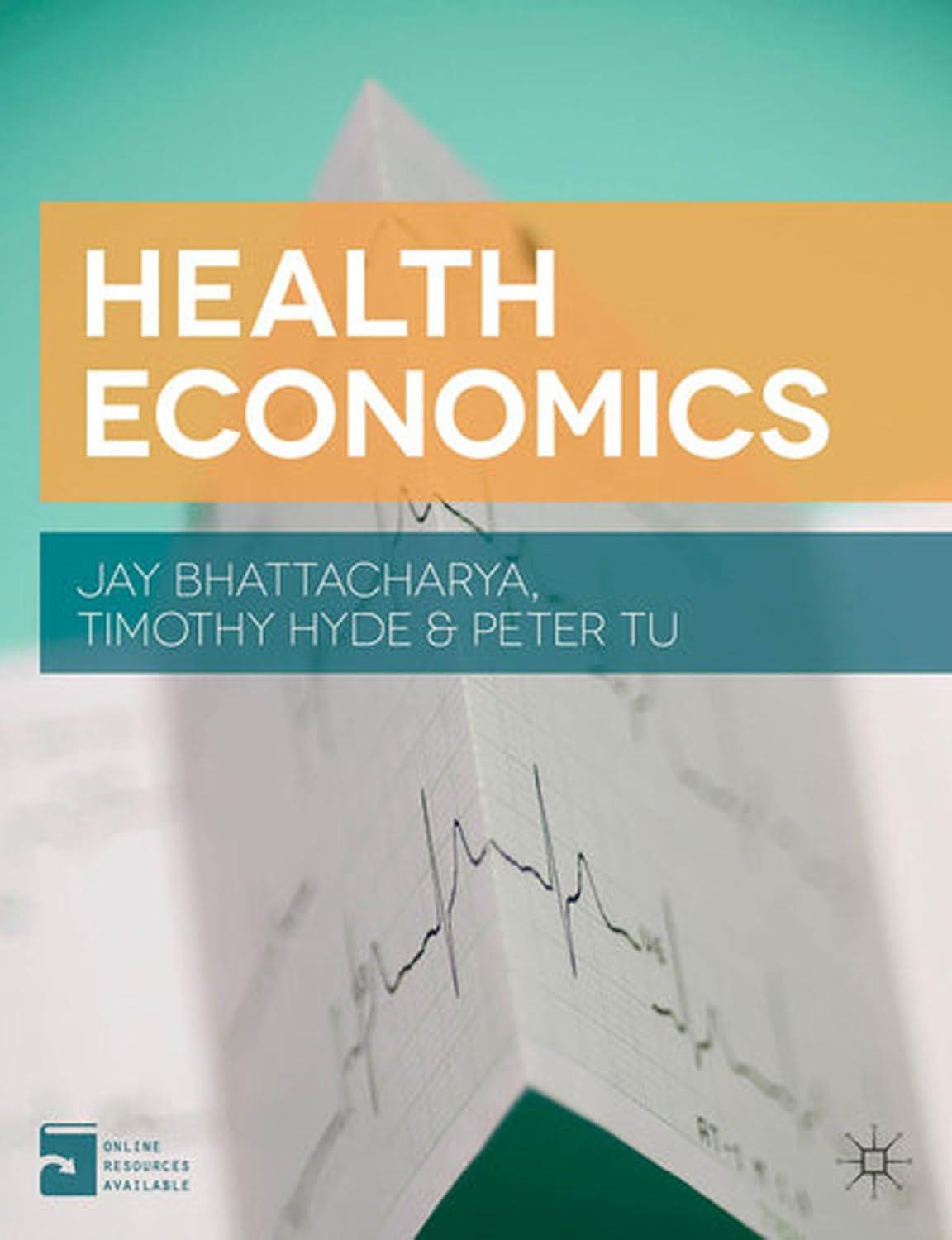Suppose that your utility function over health care (h) and other goods (c) is given by U(h,c)
Question:
Suppose that your utility function over health care (h) and other goods (c) is given by U(h,c) and that you have a fixed income of $100. (Assume that the indifference curves of your utility function bear the usual convex shape.) Each year, you choose h and c to maximize your utility subject to a budget constraint:![]()
where ph is the price of health care, pc is the price of other goods, and Y is your income.
In year 1, the price of health care is $1, while the price of other goods is $2. At these prices, you demand 30 units of health care and 35 units of other goods. In year 2, your utility function and your income do not change, but prices do. Health care becomes more expensive at $1.50, while other goods become cheaper at $1.50. At these prices,
you demand 20 units of health care.
a. Assuming you spend all your income in year 2, how many units of other goods do you buy?
b. Draw a graph with your demand for health care on the horizontal axis and your demand for other goods on the vertical axis. On this graph, draw your budget constraints in year 1 and in year 2. On these budget lines, indicate your demand points for h and c in year 1 and year 2. Also draw concave indifference curves tangent the points in year 1 and year 2 that represent your demand. Label the indifference curves U1 and U2.
c. Do the price changes leave you better off, worse off, or the same as before? Is this result just for the indifference curves you drew, or will it hold for any set of convex indifference curves?
d. Draw a budget constraint that answers the question: How much income do you need this year to buy the same bundle of goods from last year? In other words, draw a budget constraint with a slope that reflects year 2 prices but that intersects the year 1 bundle.
e. Either geometrically or algebraically, use this budget constraint to calculate the Laspeyres price index; that is, the amount of money you need to buy the year 1 bundle in year 2, divided by the money you paid for it in year 1.
f. Now draw a budget constraint that answers the question: How much income do you need this year to get to the same level of utility from last year? In other words, draw a budget constraint with a slope that reflects year 2 prices that lies tangent to U1.
g. Does the Laspeyres price index overstate or understate the welfare effect of the price changes?
Assume now that you draw utility not only from health care (h) and other goods (c)
but also from futuristic health care (f). Futuristic health care did not exist in year 1 or year 2; it was as though the price was so high that you demanded none of it. In year 3,
futuristic health care is invented and the price is $ 10 per unit of f . Meanwhile, the prices of h and c both double to $3.
h. Calculate a Laspeyres price index for the changes from year 2 to year 3. Remember to use the bundle of goods from year 2.
i According to your result from the previous question, are you better off in year 2 or year 3 (assuming constant income)?
j. In year 3, you purchase 5 units of f and 10 units of
h. Explain how you might actually have more utility in year 3 than year 2 despite the Laspeyres price index result.
k. How did your total health care expenditures (on both h and f ) change from year 2 to year 3?
l. Explain why you cannot use this result to conclude that health care is getting more expensive or less expensive.
Step by Step Answer:






